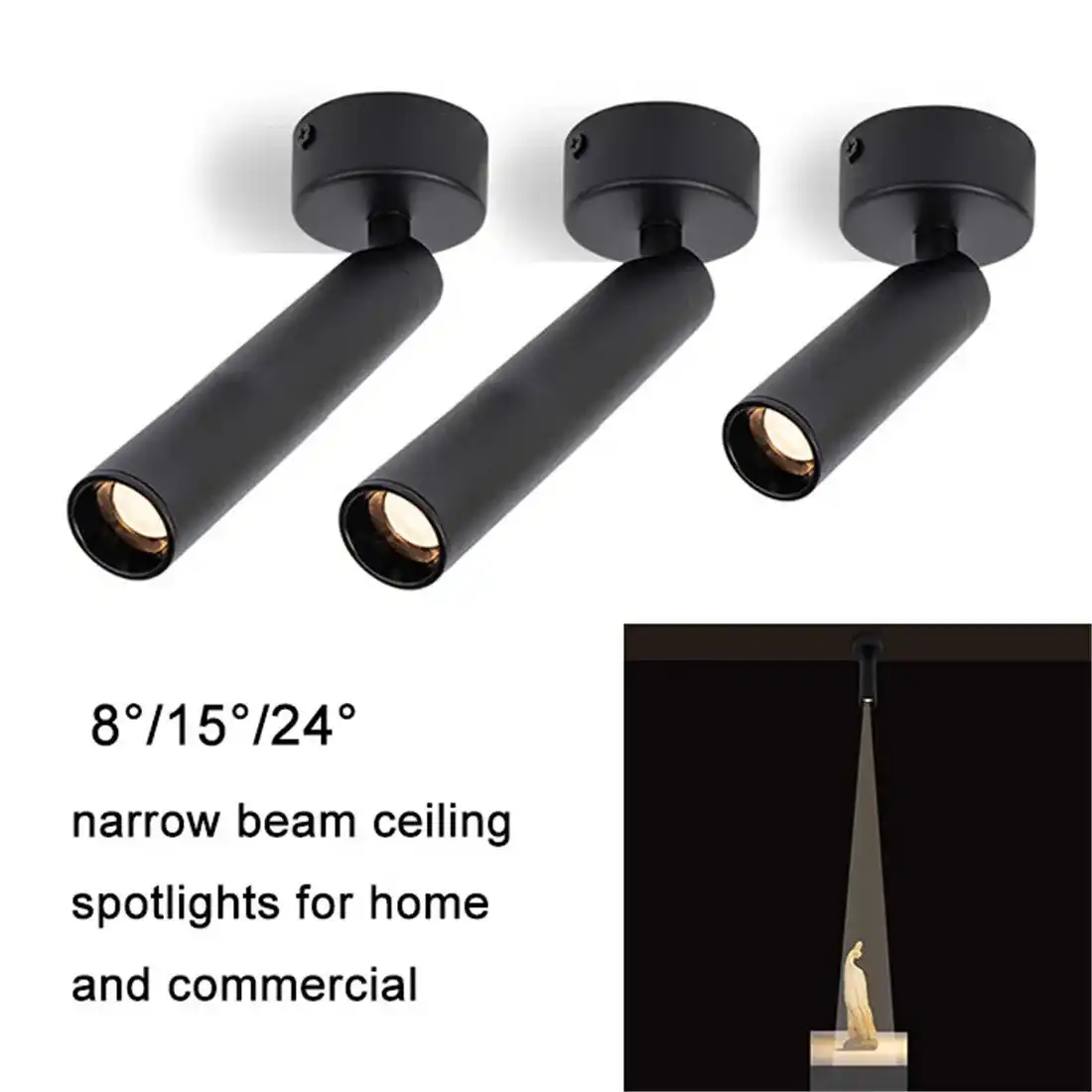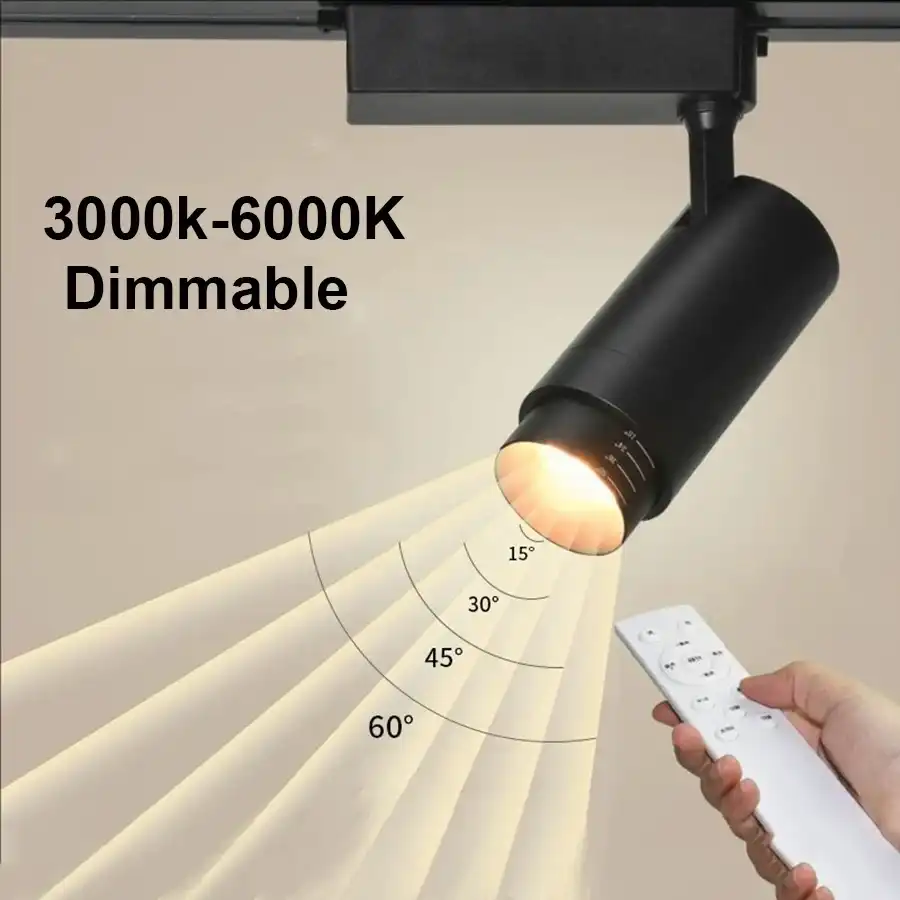How to Choose: Recessed Downlights or Adjustable Spotlights
Selecting between recessed downlights and adjustable spotlights can be a challenging decision when planning your interior lighting. Recessed downlights offer a sleek, minimalist aesthetic with their flush-mount design, providing even illumination across a space. They're ideal for general lighting in rooms with low ceilings or where a clean look is desired. On the other hand, adjustable spotlights offer flexibility in directing light, making them perfect for highlighting specific areas or objects. They're particularly useful in spaces where lighting needs may change, such as galleries or retail environments. Your choice ultimately depends on your space's function, ceiling height, and desired ambiance. Consider factors like beam angle, color temperature, and dimming capabilities to make the best decision for your lighting needs.
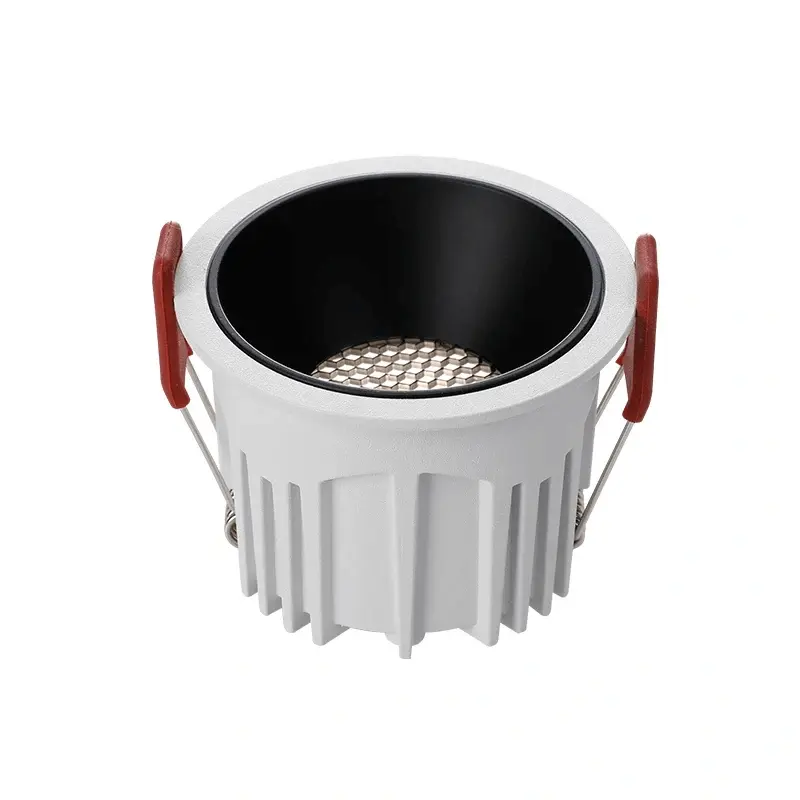
Comprehending the Basics: Recessed Downlights vs. Adjustable Spotlights
What Are Recessed Downlights?
Recessed downlights, also known as can lights or pot lights, are fixtures installed into a hollow opening in the ceiling. These lights sit flush with the ceiling surface, creating a clean and streamlined look. They typically consist of a housing, trim, and light bulb or LED module. Recessed downlights are renowned for their versatility and ability to provide general illumination without protruding into the room space.
One of the key advantages of recessed downlights is their ability to create a sense of spaciousness. By blending seamlessly into the ceiling, they don't interrupt sight lines or compete with other design elements in the room. This makes them particularly suitable for spaces with low ceilings or where a minimalist aesthetic is desired.
Recessed downlights come in various sizes, typically ranging from 2 inches to 6 inches in diameter. The size you choose depends on the ceiling height, room size, and desired light output. Smaller downlights are often used in more intimate spaces or for accent lighting, while larger ones are better suited for general illumination in larger areas.
What Are Adjustable Spotlights?
Adjustable spotlights, on the other hand, are directional light fixtures that can be rotated or tilted to focus light on specific areas or objects. These fixtures are often mounted on tracks, recessed into the ceiling, or attached to the surface of the ceiling or wall. The key feature of adjustable spotlights is their flexibility in light direction, allowing you to highlight artwork, architectural features, or create dramatic lighting effects.
Spotlights typically have a narrower beam angle compared to recessed downlights, ranging from about 15 to 60 degrees. This focused beam makes them ideal for accent lighting, task lighting, or creating visual interest in a space. Many adjustable spotlights also offer interchangeable lenses or beam spreads, providing even more versatility in their application.
One of the main benefits of adjustable spotlights is their adaptability. As your space or lighting needs change, you can easily redirect the light without having to reinstall the fixtures. This makes them particularly valuable in dynamic environments like retail stores, art galleries, or home spaces that are frequently rearranged.
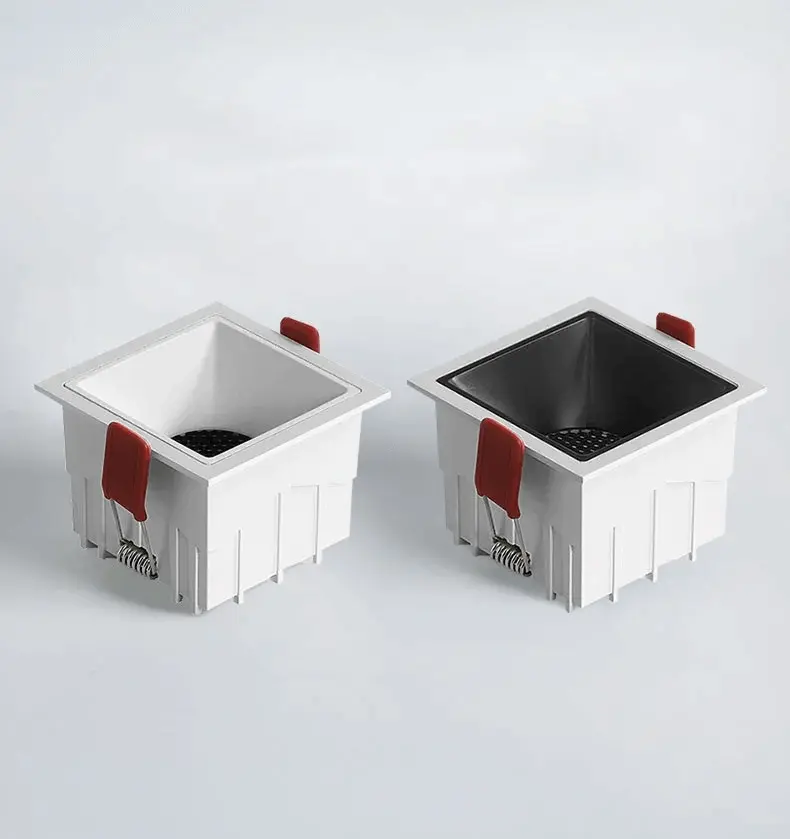
Factors to Consider When Choosing Between Recessed Downlights and Adjustable Spotlights
Room Function and Lighting Requirements
The function of the room plays a crucial role in determining whether recessed downlights or adjustable spotlights are more suitable. For general illumination in living rooms, kitchens, or bedrooms, recessed downlights often provide a more even and comfortable light distribution. They create a uniform wash of light that's ideal for everyday activities and can be complemented with task lighting where needed.
In contrast, adjustable spotlights excel in spaces where focused lighting is required. They're particularly effective in rooms with specific focal points, such as dining areas, home offices, or spaces with artwork or architectural features you want to highlight. The ability to direct light precisely makes spotlights invaluable for creating depth, shadow, and visual interest in a room.
Ceiling Height and Room Size
The height of your ceiling and the size of the room are important considerations when choosing between recessed downlights and adjustable spotlights. In rooms with low ceilings (8 feet or less), recessed downlights are often preferred as they don't protrude into the room, maintaining a sense of spaciousness. They can also help to visually raise the ceiling by washing light down the walls.
For rooms with higher ceilings, both options can work well. Recessed downlights in high-ceilinged spaces may require more powerful lamps or a greater number of fixtures to provide adequate illumination at floor level. Adjustable spotlights can be particularly effective in high-ceilinged rooms, as their focused beams can bring light down to where it's needed without losing intensity.
Aesthetic Preferences and Interior Design
Your aesthetic preferences and overall interior design scheme should guide your choice between recessed downlights and adjustable spotlights. Recessed downlights offer a clean, minimalist look that complements modern and contemporary interiors. They're virtually invisible when not in use, allowing other design elements to take center stage.
Adjustable spotlights, while more visible, can become a design feature in their own right. They're often chosen for their industrial or architectural aesthetic, particularly in spaces with a more eclectic or dramatic design approach. The fixtures themselves can be selected to complement or contrast with your interior style, adding another layer of visual interest to your space.
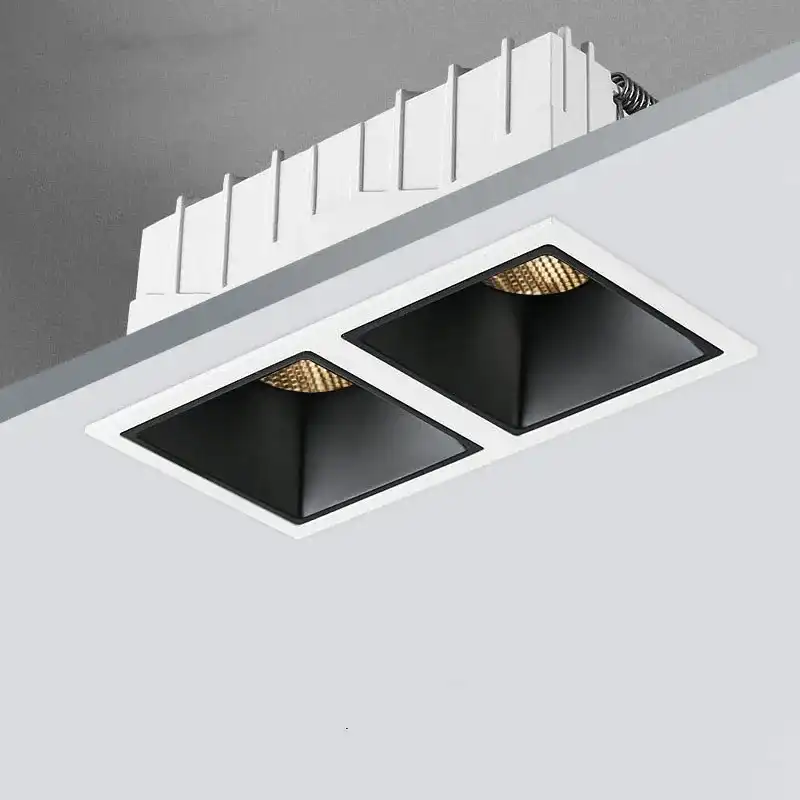
Technical Considerations: Beam Angle, Color Temperature, and Dimming Capabilities
Understanding Beam Angle
Beam angle is a critical factor in lighting design, affecting how light is distributed in a space. Recessed downlights typically have wider beam angles, ranging from 24 to 60 degrees. This allows for broader coverage and more even illumination across a room. When selecting recessed downlights, consider the ceiling height and desired light spread to determine the appropriate beam angle.
Adjustable spotlights often have narrower beam angles, typically between 15 and 45 degrees. This focused beam is ideal for highlighting specific objects or creating dramatic lighting effects. Some spotlights offer interchangeable lenses, allowing you to adjust the beam angle based on your needs. When using spotlights, consider the distance from the light source to the object being illuminated to ensure proper coverage and intensity.
Importance of Color Temperature
Color temperature, measured in Kelvin (K), affects the mood and perception of a space. Both recessed downlights and adjustable spotlights are available in a range of color temperatures. Warm white (2700K-3000K) creates a cozy, inviting atmosphere, ideal for living rooms and bedrooms. Natural white (4000K-4200K) provides a crisp, clean light suitable for kitchens and workspaces. Cool white (6000K-6500K) mimics daylight and is often used in commercial or task-oriented environments.
When choosing between recessed downlights and adjustable spotlights, consider how the color temperature will interact with your interior design and the activities taking place in the space. Some fixtures offer color-changing capabilities, allowing you to adjust the color temperature based on time of day or desired ambiance.
Dimming Capabilities and Control Systems
Dimming capabilities are essential for creating flexible lighting schemes and managing energy consumption. Both recessed downlights and adjustable spotlights can be dimmable, but it's important to ensure compatibility between the fixtures, dimming system, and LED drivers.
Recessed downlights are often integrated into whole-room dimming systems, allowing you to adjust the overall light level in a space. This is particularly useful in multi-purpose rooms where lighting needs may vary throughout the day.
Adjustable spotlights may offer individual dimming control, allowing you to create more nuanced lighting scenes. This can be particularly effective in spaces where you want to highlight certain areas while subduing others. Advanced control systems can even allow for programmable lighting scenes, integrating both recessed downlights and spotlights into cohesive lighting designs.
Energy Efficiency and Longevity
When considering the long-term implications of your lighting choice, it's important to factor in energy efficiency and product longevity. LED technology has revolutionized both recessed downlights and adjustable spotlights, offering significant energy savings compared to traditional incandescent or halogen options.
Look for fixtures with high lumens per watt ratings to ensure maximum efficiency. Many quality LED fixtures boast a lifespan of 50,000 hours or more, significantly reducing maintenance and replacement costs over time. When comparing options, consider the warranty period and expected lifespan of the fixtures to make an informed decision about the total cost of ownership.
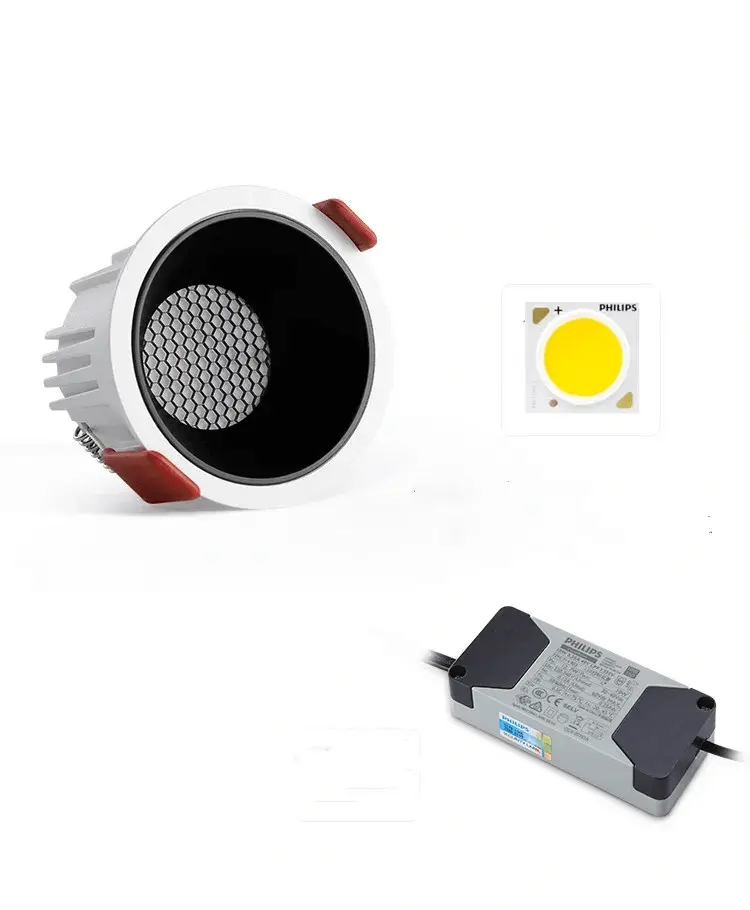
Conclusion
In conclusion, the choice between recessed downlights and adjustable spotlights depends on a variety of factors including room function, ceiling height, aesthetic preferences, and specific lighting requirements. By carefully considering these aspects along with technical specifications like beam angle, color temperature, and dimming capabilities, you can create a lighting scheme that enhances your space and meets your needs. For expert advice on selecting the right lighting solution for your project, don't hesitate to reach out to us at sales@uskyled.com.
References
1. Smith, J. (2022). The Complete Guide to Residential Lighting: Recessed vs. Spotlights. Illumination Today, 45(3), 78-92.
2. Johnson, A. & Lee, S. (2021). Energy Efficiency in Modern Lighting: A Comparative Study of Downlights and Spotlights. Journal of Sustainable Lighting, 16(2), 205-220.
3. Williams, R. (2023). Architectural Lighting Design: Balancing Form and Function. Building & Environment, 203, 108982.
4. Chen, L., et al. (2022). The Impact of Lighting Choices on Interior Aesthetics: A Case Study of Recessed Downlights and Adjustable Spotlights. Interior Design Review, 38(4), 312-328.
5. Brown, T. & Davis, M. (2023). LED Technology Advancements: Implications for Recessed and Directional Lighting. Annual Review of Energy and the Environment, 48, 331-355.

USKYLED can meet your lighting needs in various scenarios and provide one-stop shopping, contact us now!
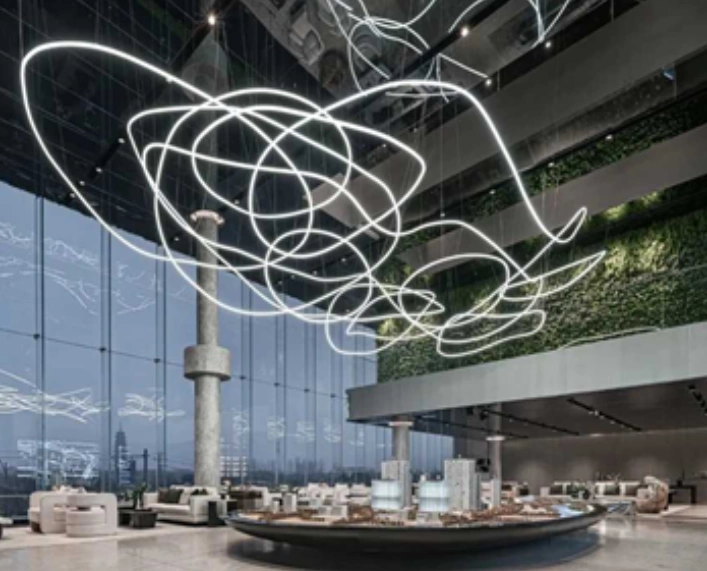
Why You Should Choose USKYLED?
![What is Dimmable Track Lighting for Museum: Best Guide [2025]](/icms/upload/0d08cc601e7611f0b542b3ca0c0f4a83/pic/knowledgemanager-knowledgepic/e7879f32605f11f081911f363b8c1ed0/Directory/20250717 dimmable track lighting -1(1)_1752739217941.webp)
